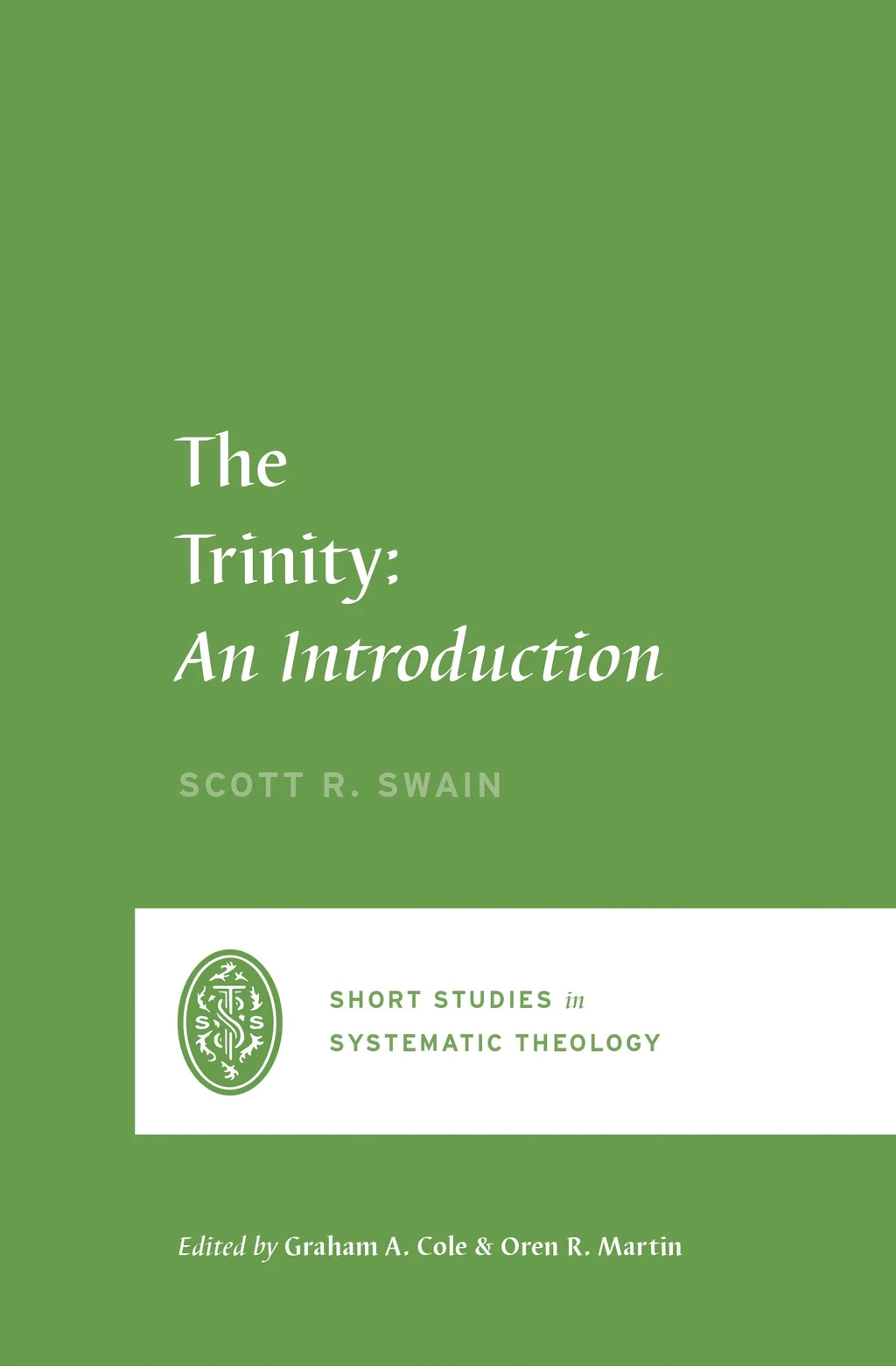
Scott R. Swain
Reviewed by: Ryan M. McGraw
The Trinity: An Introduction, by Scott R. Swain. Crossway, 2020. Paperback, 160 pages, $15.99. Reviewed by OP seminary professor Ryan M. McGraw.
The doctrine of the Trinity is the center point of Christian faith and practice. The reason for this is that God is the center of the Christian message. Yet many believers, and perhaps even ministers, can struggle to express the doctrine adequately, let alone know what to do with it. Swain’s The Trinity is a sound and satisfying treatment that should appeal both to a general audience and to theological students and ministers.
Swain develops Trinitarian doctrine in eight brief chapters. The first two root the doctrine in Scripture, both in terms of the “grammar” of the Trinity and “three types of texts” needed to develop it, showing that we must learn to identify biblical texts that are common to the whole Trinity and proper to the divine persons (34–35). Chapter 3 addresses the issue of divine simplicity and the Trinity, which has become a thorny issue in contemporary discussions. He devotes chapters 4–6 to the Father, Son, and Spirit, in turn. Finally, chapters 7 and 8 conclude with the work of the triune God and the end of his work. Swain includes useful sections on how the “appropriate” works of the divine persons single out one person of the Godhead in ways that reflect their eternal order of procession, and on the “missions” of the divine persons in our salvation. The final chapter ends on the high note of the glory of God, particularly respecting the intra-Trinitarian fellowship among the divine persons, concluding that God reveals and glorifies himself for our salvation, joy, and doxology.
Several features of this book stand out. Swain begins wisely by appealing to ways that the church already praises the triune God for his “being, beauty, and beatitude” (15), as well as for his works (16). This has the advantage of taking readers from where they are into a deeper understanding of and love for their God. Christian baptism also serves as a useful starting point (20, 27–30), both because baptism often does not occupy the role that it should in the Christian life and because baptism conveniently sets the triune God before us as the object of faith and devotion. Addressing contemporary debates over the eternal subordination of the Son, Swain notes helpfully that proponents of this view unintentionally redefine personhood in terms of authority and submission instead of relations of origin (85–86). He expands this idea with exceptional clarity and brevity, without turning a positive treatment of the Trinity into a polemical one. Swain’s exploration of the work of the triune God is noteworthy as well, since it will teach readers what to look for as they read their Bibles and see the persons of the Trinity in their united work jump from the pages of the New Testament at every turn.
Simple yet not superficial, it is one of the best books of its kind, and it should be the first book that many turn to.
July 27, 2025
July 20, 2025
July 13, 2025
Proclaiming Christ in a Pluralistic Age
July 06, 2025
June 29, 2025
June 22, 2025
June 15, 2025
© 2025 The Orthodox Presbyterian Church